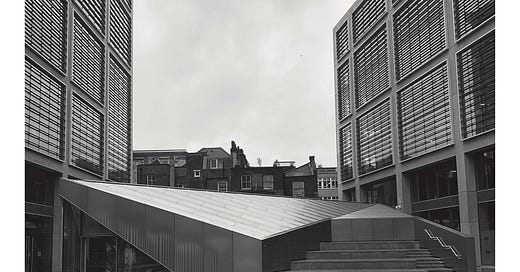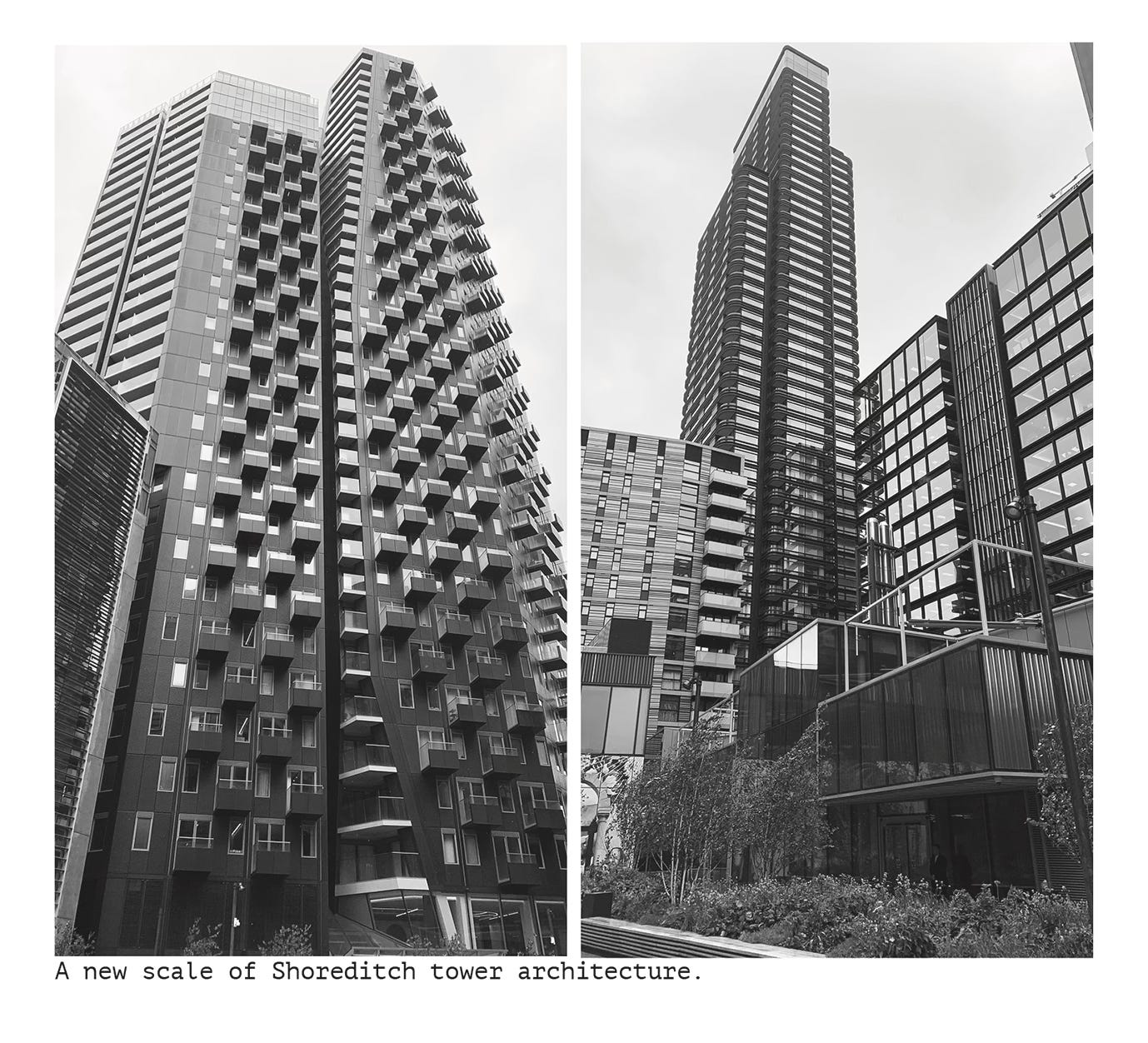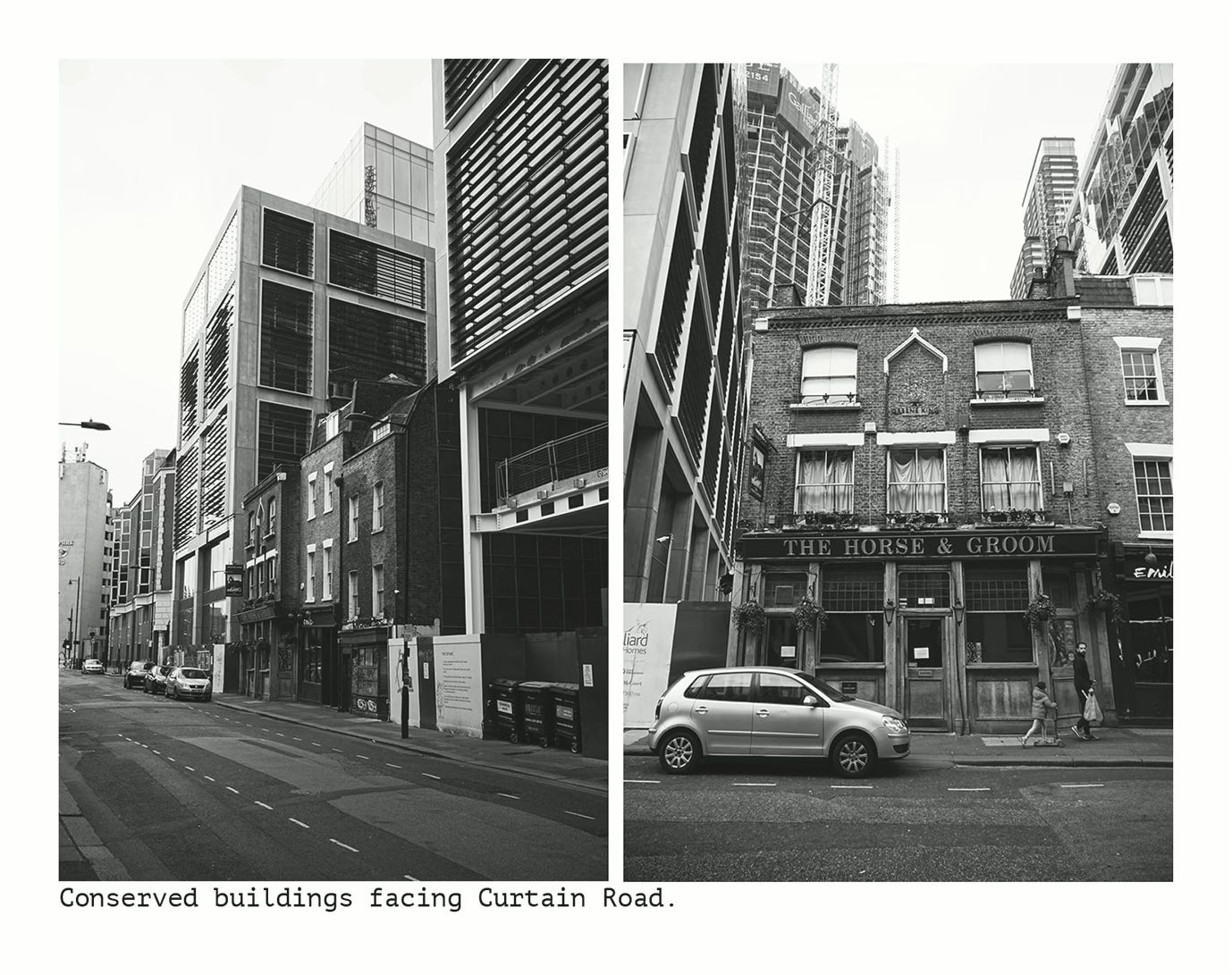It was a wet and blustery day following weeks of May sunshine. I set out to visit the latest development in South Shoreditch. City of London land values have been steadily migrating northwards for many years. Consequently, wherever a site becomes available, residential and office towers of unprecedented scale are rising in every available gap.
The Stage EC2 is one of these huge Shoreditch developments financed through a partnership between McCourt Partners, Vanke, Galliard Homes, and The Estate Office Shoreditch, led by Cain International. CJO Shea constructed the buildings, with Perkins and Will as the principal architects for the £750 million project. This new part of Shoreditch emerges from the alchemy of global finance and local opportunity.
After initial demolition and site clearance, a detailed archaeological investigation discovered Elizabethan foundations that, on careful examination, were revealed to be the remains of The Curtain Theatre, one of two Shoreditch theatres that were London’s first custom-built playhouses where Shakespeare's dramas were first performed. To the archaeologists’ surprise, the Curtain Theatre was revealed to have a rectangular plan unlike its circular neighbour and predecessor, The Theatre, located a short distance to the north. The discovery provided a dream branding opportunity, with The Stage selected as the name for the entire development, and theatrical references used for the names of each building, hence the Hewitt and Bard office towers. As the development website optimistically proclaims: ‘The Stage is set.’
The Curtain Theatre archaeological remains are now safely conserved in a pavilion building forming the centrepiece of a square in the heart of the new development. The remains and other objects discovered during the excavations will be the principal exhibits of a small Shakespeare Museum open for public viewing. The Museum design is said to include the tantalising prospect of once more staging performances on a new floor suspended above the original Curtain Theatre stage, where Shakespeare himself may have acted. Stepped levels on the roof of the new museum will also allow for performances staged in the open square surrounding the new museum. The pavilion is clad in metal panels carefully profiled to resemble a draped curtain. This is a curious choice of architectural ornament. The Curtain Theatre was not named after stage curtains but after the street beside a curtain wall enclosing the Holywell Priory that formerly stood on the site.
The Stage is just one of many new Shoreditch developments of an unprecedented scale; however, as always in London, this newness is deeply rooted in history. Many forms of continuity and change are evident in the development transformation.
Initially, the scale of the towers seems shocking. However, this astonishment at the scale of new development has been felt by every generation during the centuries of change that have seen the village of Shakespeare's Shoreditch replaced by waves of disruptive Georgian, Victorian, and 20th-century development.
Each phase of change responded to the commercial conditions of its time. Today is only different in the scale of global finance deployed. London has always been a place of ordinary utility (even if unattractive) rather than a city conceived according to an aesthetic vision of urban form.
Next to the new museum, the Horse and Groom pub and a row of houses are being repaired. The intention here is to save small parts of the historic city as useful places for new life and activity, conveying narratives about the past and present in the living city.
The archaeological remains of the Curtain Theatre and other fragmentary objects are now safely conserved beyond use, serving only as storytelling devices to connect the present with the past.
On the day I visited, contractors were hard at work on the adjacent site boring deep piles and excavating the earth from the centre of the site. Layers of London landfill containing memories held in discarded rubble and dust were being dumped into trucks and carted away.
Note. If you would like to read past Hoxton Chronicle posts, please subscribe to the free Substack Application and search for The Hoxton Chronicle.







One of my ancestors lived in Curtain Road, in one of the tiny little houses that, last time I visited, was still there. It was either 22 or 24. He worked as a bone boiler + a particularly nasty occupation! However, I am always concerned that the little house's land footprint is too valuable to leave it standing, and that it will be swept away in a tide of steel and glass. Shoreditch does indeed seem to be changing beyond all recognition.
You had the the politenees and discipline not to mention how ghastly and unwelcoming the new buildings are